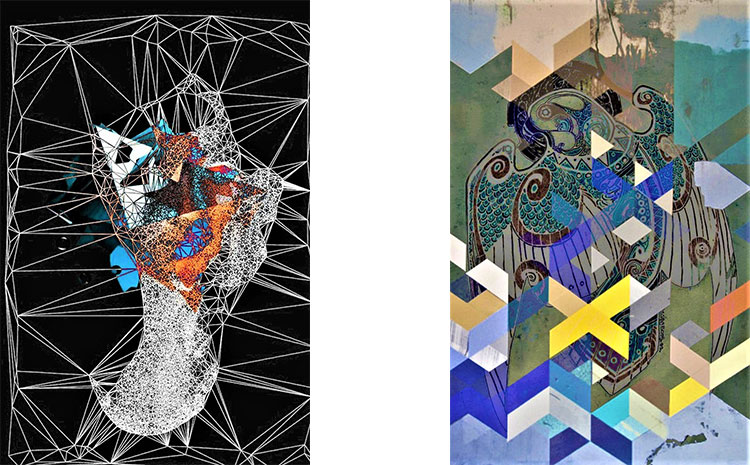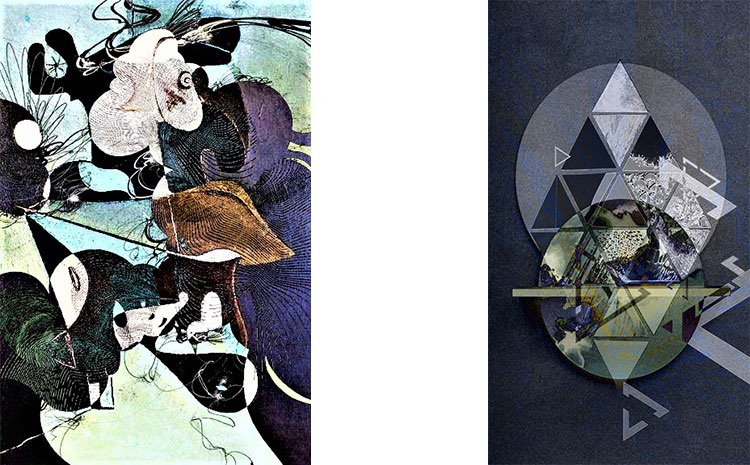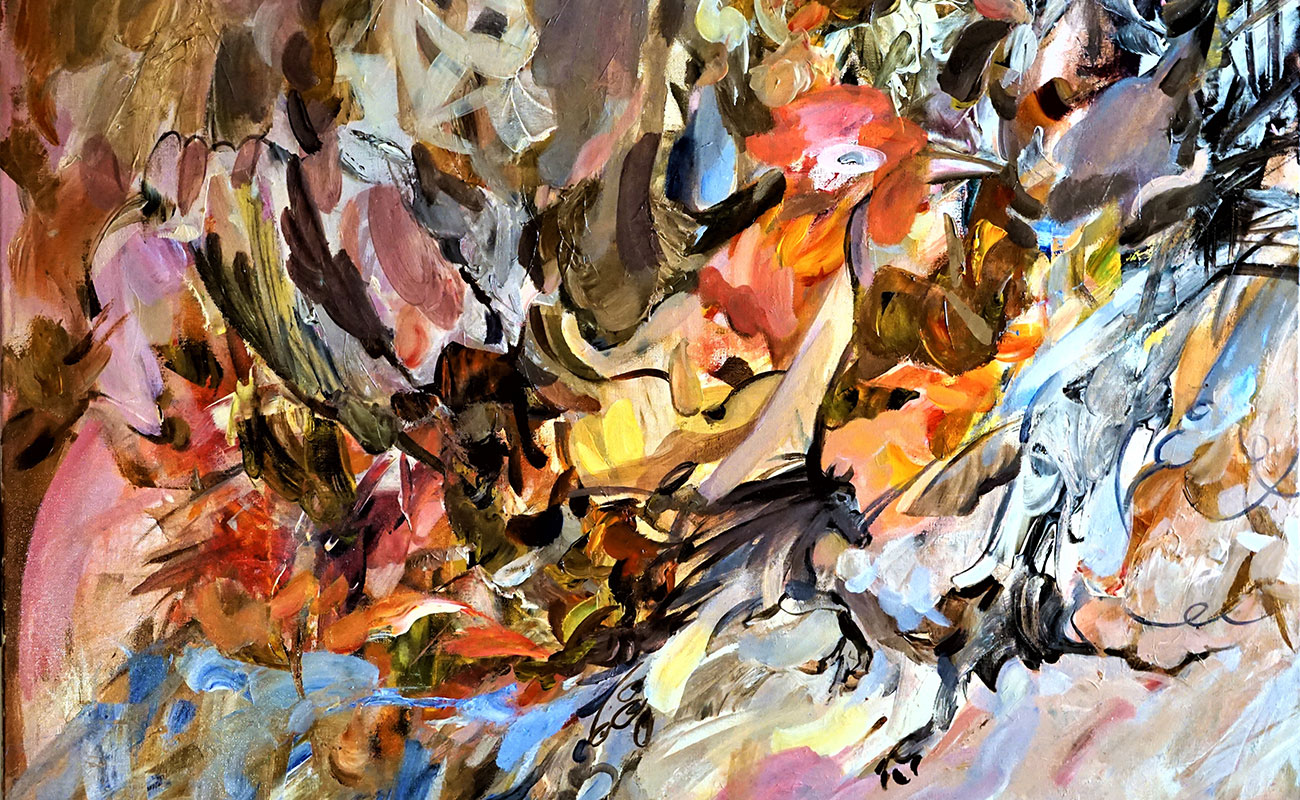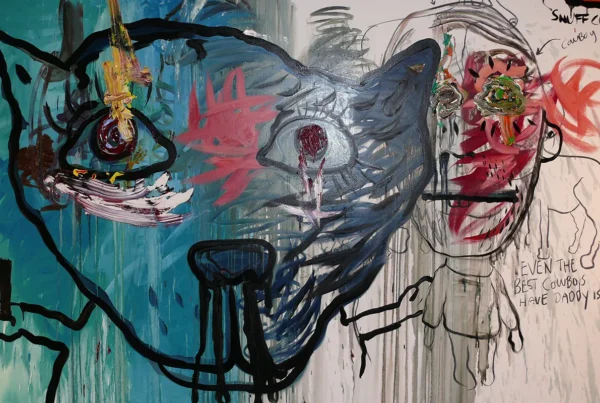“Our stable stereotypes are what create our reality. It follows that by changing stereotypes we are able to change reality. Creativity changes us and makes us free and happy.”
A Life of Artistic Pursuits and International Recognition
Hailing from Ukraine, Walery Jemcew has successfully earned an artist-technologist qualification upon graduating from the prestigious Moscow Textile Institute. His artistic pursuits predominantly involve easel painting and drawing. Since relocating to Cracow in 2003, Jemcew has continued to live and work in this vibrant city.
Currently, he holds the esteemed position of President of the International Association of Artists “Art without Borders,” a Cracow-registered organization. Additionally, Walery is the visionary and curator behind the international project, “Ambassadors of Culture.” His affiliations include memberships in the Union of Polish Artists, the International Union of Artists in China, the International Union of Artists for Peace, and an honorary membership in the Union of Artists of the Republic of Kyrgyzstan.
Jemcew’s contributions to the art world have been recognized through numerous international art awards, spanning countries such as China, Kazakhstan, Kyrgyzstan, Moldova, and Ukraine. His creative works have graced the halls of various exhibitions both in his homeland and internationally.
Between 2013 and 2019, Walery actively participated in art projects orchestrated by the International Union of Artists (China) and the International Union of Artists for Peace, with engagements in China, Kyrgyzstan, Kazakhstan, Belgium, and Russia. For many years, he has organized and led plein-air painting workshops, in which he also partakes as a participant.
The impact of Jemcew’s artistic creations extends across private and museum collections in countries such as Moldova, Turkey, Germany, China, the United States, and Ukraine.
Every artist possesses the autonomy to generate their own creative expression. Walery’s approach centers on continuous learning and staying at the forefront of artistic trends. Renowned masters, both deceased and geographically distant, have bequeathed a wealth of knowledge and inspiration through their oeuvre.
Embracing education with enthusiasm and a keen sense of wonder enables Jemcew to remain captivated by the world around him. This process involves the meticulous collection and organization of information, which ultimately informs his artistic vision. His creations are the very pieces he would personally desire to acquire.
Rather than striving for uniformity in his work, Walery embraces the intrinsic individuality of each piece, unified only by the common thread of his own artistic touch. He approaches his craft with intentionality, eagerly sharing his creations with a receptive audience.
Audiences appreciate transparency, and Jemcew willingly divulges the techniques and inspiration behind his work. Utilizing the internet as a platform for showcasing his art, he engages with an expansive community of fellow creators and enthusiasts. The digital realm serves as a vibrant space for the exchange of ideas, enriching the artistic experience for all involved.

Embracing Dialogue and Collaboration in Art
The utilization of “DIALOGUE” is a prominent technique employed in Walery Jemcew’s artistic process when creating a painting. This method provides an enthralling exploration into the realm of distinguished artists who have left an indelible impact on global culture. Through a meticulous examination and analysis of their work, Jemcew integrates aspects of their style into his own creations.
This approach goes beyond mere imitation or mechanical reproduction; rather, it involves immersing oneself in the artistic sphere of the master. It would be inappropriate to label this process as plagiarism, as it fundamentally serves as an avenue for research and personal development. As unique and distinct individuals, artists each bring their own perspectives and experiences to their artistic endeavors.
Eastern psychology posits that an artist’s bodily memory accumulates and preserves information, which they then refine as they develop their creative identities. Throughout his work, Jemcew employs various techniques, often drawing inspiration from the methods of other artists and incorporating them into his own practice.
Walery Jemcew’s creative process is not constrained by rigid ideas or concepts. Instead, it is characterized by fluidity and adaptability. Colloquially, his friends have dubbed him a “travel painter,” due to his proclivity for traversing multiple styles, directions, genres, themes, and techniques within the realm of art.
For Jemcew, creativity serves as a perpetual celebration—a joyous exploration that continually accompanies him on his artistic journey.
The creative process varies significantly among artists, often characterized by distinctiveness and idiosyncratic logic. However, artists seldom contemplate how the artistic endeavors of others influence their own creativity, molding their artistic identities. Numerous factors permeate their lives, shaping the landscape in which they create.
For Walery Jemcew, collaboration is the paramount factor in creativity, superseding competition. Consider a scenario where multiple individuals possess a seemingly brilliant, yet identical idea. By sharing and exchanging ideas, each artist gains access to a diverse array of concepts. This process results in an enriched creative experience for all involved.
Boundless generosity has the power to elevate collective greatness. Jemcew wholeheartedly encourages artists to embark on a transformative journey towards heightened understanding and awareness in all aspects of their creative lives. May they strive for and ultimately attain the zenith of perfection in their pursuits.

A Journey Through Eastern Philosophy and Creative Expression
During Walery Jemcew’s formative years as an emerging artist, he devoted considerable time to crafting intricate figures of fantastical creatures using plasticine. By the age of 11, vivid, chromatic dreams filled his nights, during which he soared between mountain peaks. These dreams, with their striking landscapes, left an indelible impression on Jemcew’s memory.
His aptitude for watercolor painting was first recognized by a mentor at his childhood art school, who deemed him a master in the medium after a successful rendering of an avian subject, presumably a parrot. This ignited Jemcew’s passion for painting and academic drawing.
Throughout the artist’s tenure at the Academy, he was fortunate to encounter an exceptional roster of professors and to be immersed in the teaching traditions established by the Soviet-era “Jack of Diamonds” group of artists. This experience exposed Jemcew to contemporary artistic paradigms.
The concept resonating profoundly with his artistic inspiration traces back to Eastern Himalayan philosophies, which emphasize the importance of achieving harmony among the mind, body, and energy. Jemcew believes that this state of equilibrium is vital, as any imbalance can lead to a diminished life span and other complications. By remaining vigilant and conscientious in his thoughts, actions, and speech, he cultivates an environment conducive to the spontaneous generation of ideas. Consequently, his mind transforms into an organic incubator for creative expression, unencumbered by effort or constraint.
Jemcew’s pursuit of a doctorate and experimentation in both painting and teaching led him to conceive “Art as Science,” wherein the artist is akin to a scientist investigating the vast expanse of artistic territory. This journey culminated in the development of a novel artistic style he dubbed “Space is form, form is space,” inspired by a Tibetan lama’s lecture entitled “Life is a precious commodity,” introduced to him by his students.
In their infancy, humans epitomized unadulterated joy and love, cognizant of their significance and perceiving themselves as the focal point of the cosmos. Possessing remarkable courage, they asserted their desires and unreservedly manifested their emotions. Jemcew believes that humans innately understood their perfection, and that this intrinsic truth underscores the essence of their existence, while all else constitutes acquired fallacies that may be supplanted by newfound wisdom.
Walery Jemcew asserts that thoughts and actions shape life’s trajectory, as individuals are the architects of their own reality. Creativity serves as a conduit, enabling them to reconnect with their true selves and attain liberation and happiness.
The artist firmly believes that underlying each impact created, there exists a paradigm of thought that perpetuates said impact. These enduring paradigms forge reality, suggesting that altering these thought patterns facilitates the transformation of reality. Creativity, in turn, instigates change, liberating and delighting people.
Embracing a creative credo as an artist has been pivotal in reshaping Jemcew’s life and illuminating the wellspring of human bliss. He regards lives as inimitable and invaluable treasures and is profoundly grateful for his capacity to paint.
The vast majority of Tibetan monks engage in painting, singing, composing poetry, playing musical instruments, and dancing. The absence of an independent existence implies that thoughts, words, and actions actively construct lives, which can be extensive and fulfilling. Walery Jemcew gleaned this understanding from observing Tibetan monastic life.

Art as a Path to Harmony and Universal Connection
For Walery Jemcew, painting serves as a meditative exercise, and he is elated to utilize this efficacious method in cultivating harmony within his life. Jemcew hopes his endeavors contribute to collective benefit, joy, and prosperity.
Achieving harmony among his mind, body, and energies is a source of immense pride for the artist. Jemcew’s thoughts, words, and actions imbue the surrounding space with love and compassion. By adeptly applying painting techniques, he breathes life into a spiritualized rhythm of living movement. Anchoring his focal point in the present moment liberates his mind from attachment to personal preferences.
In channeling his creative energy, Jemcew establishes a sacred space. The ultimate measure of success lies in the viewer’s reaction, which consistently offers an accurate assessment of his work. Should the aforementioned qualities be absent, the artwork remains unrealized, yet he harbors no disappointment.
The positive impact of Jemcew’s past, present, and future endeavors must ultimately serve to enrich and delight humanity. This project embodies his humble accumulation of expertise amassed over the years, which he eagerly wishes to impart to his colleagues, encouraging them to join in collaborative and inventive pursuits.
The project’s driving force is rooted in the profound wisdom of Far Eastern philosophy, an intellectual pursuit that has captivated Jemcew for years and resonates deeply with the artists involved in the endeavor. This philosophical perspective posits that everything in existence is interconnected, lacking autonomous being. For an individual to thrive, they must select the appropriate course of action, guided by insightful instructions to attain their objectives.
In today’s world, what trajectory might one pursue? Walery suggests embarking on a thrilling artistic voyage equipped with a backpack brimming with resources, or opting to mount a formidable steed. However, the most advantageous choice would involve traversing the expressway in a high-speed automobile, leveraging cutting-edge technology at every turn.
Contrary to the notion of conflict or opposition, the Eastern perception of the creative process emphasizes harmony and perpetuity. The creation of sacred icons and, in Tibetan culture, thangkas, exemplify this approach. These works of art possess an eternal, harmonious quality devoid of egotism or authorial attribution, ultimately serving as a gift to humanity. Art can foster harmony, equilibrium, and mental tranquility. Achieving balance and harmony in life is indicative of physical and mental well-being. A healthy, energetic individual produces positive, joyous work that amplifies their creative potential. Consequently, Jemcew proposes the following project strategy as a guiding principle:
This life philosophy and approach should transcend nationality, cultural background, social disparities, and political divides, uniting people universally. Walery Jemcew’s foremost priority is to amalgamate our strengths, fostering a heightened awareness of the creative process and the delight derived from collaborative efforts.






